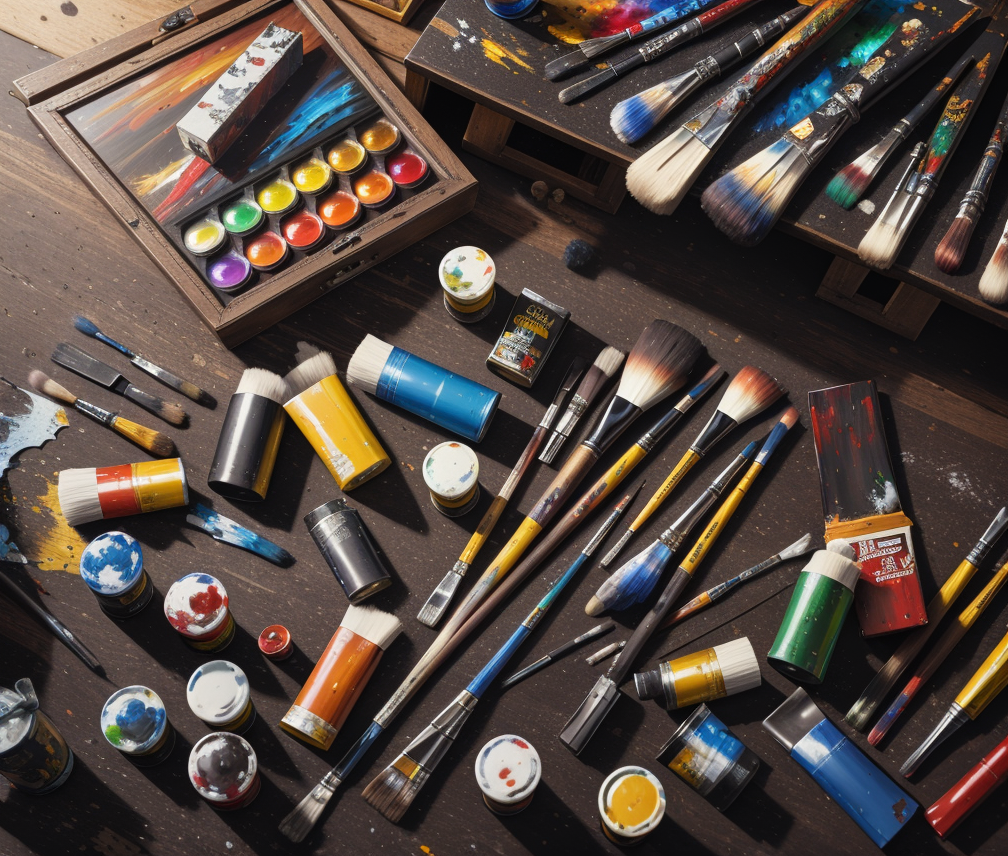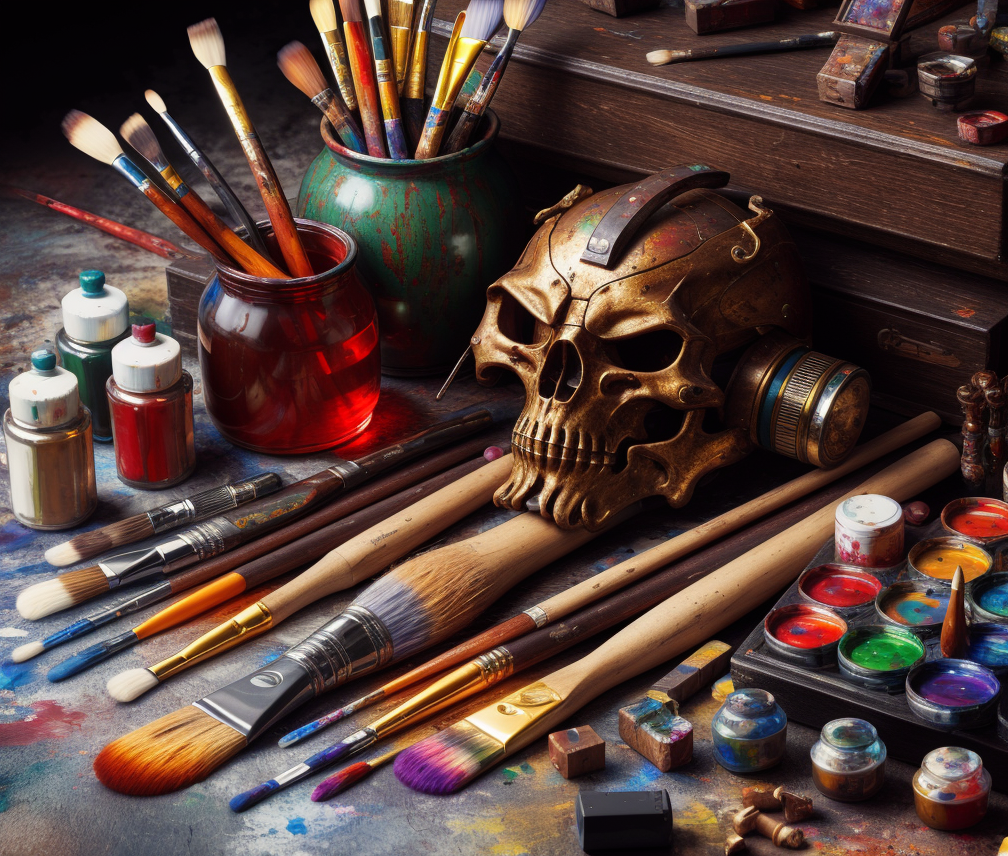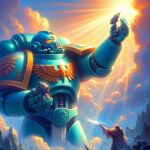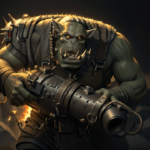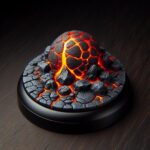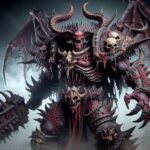Painting Your First Warhammer Army: The Ultimate Guide for Beginners
When building and painting your first army the number of options and potential pitfalls along the journey can feel overwhelming. But with the right strategy, motivation and technique, successfully finishing that inaugural army is very achievable! This comprehensive guide will provide everything you need to know to paint your first miniatures army to a solid tabletop standard.
Choosing Your Army and Establishing Your Goals
The first step is selecting the army you actually want to paint. This choice is crucial because you need to really enjoy the aesthetic design of the models – after all you’ll be staring at them for hours on end! When just starting out, I’d recommend beginning with a more compact 500-1000 point force, rather than diving headfirst into a massive 5000 point horde.
This way, you can ensure you stay motivated and actually complete the project.
It’s also wise to pick units that have relatively easy to paint attributes. Generally, lighter color schemes are more novice-friendly compared to darker pigments which require extensive layering and highlighting. Simple yet striking color combinations like blue and orange or green and purple work very effectively. And yes, while painting yellow can be notoriously tricky, don’t be afraid to experiment a little!
Once you’ve settled on your chosen army, spend some time clearly defining your core goals and motivations behind this new hobby endeavor, such as:
- To fully paint your starter army within a reasonable timeframe
- To comprehensively learn fundamental techniques
- To consistently improve the quality of each model
Outlining these objectives will help drive your progress and prevent you losing steam halfway through batch number 3!
Optimizing Your Painting Process
When embarking on painting your inaugural force, I would advise adopting a streamlined process that enables you to work quickly while still producing nicely table-ready models. As your skills develop with each new soldier, you can then incorporate more advanced flourishes. But for starters, focus on seamlessly applying basecoats and washes across units.
After priming your minis, use slightly larger brushes to rapidly layer your main armor color, fabric hue, leather shade etc as needed. Try to paint 5 models simultaneously, working through every batch methodically before beginning finer details. This avoids continuously cleaning brushes and changing paints. Once all basecoats are complete, wash the appropriate areas with targeted Citadel Shades. This effortlessly creates definition. After drying, add textures and colors to bases, paint rim edges, attach models and voila – troops ready for battle!
Later on, you can level-up elements like blending metals, perfecting faces, battle damage etc. But resist over complicating early attempts. As renowned painter Duncan Rhodes says: “Two thin coats! Less is more when applying paint.”
Staying Motivated Across the Army Enduring the long road from first model to finished army is hardest step.
So here are some key tactics that will keep you focused when enthusiasm starts flagging around batch number 7!
Community – Nothing maintains motivation better than a sense of community! Join painter Facebook groups, subreddit threads and Discord channels. Post progress images and request feedback. Local gaming clubs also provide perfect painting hangouts.
Consistency – Rather than sporadic long sessions, quick-fire 15 minute bursts tend to work better in providing a regular hobby routine. Even during busy periods find ways to grab your brushes.
Variety – If slogging through endless core troops feels tedious, switch things up by painting a fun special character or centerpiece monster. This breaks monotony while flexing new techniques.
Planning – Batch prepare as much as possible for upcoming sessions, like getting palettes and models assembled ready to go. This avoids wasting precious hobby time on setup tasks.
Tracking – Maintain a painter’s journal noting mix ratios, order-of-operations, trials and errors. This massively helps resume a project after a break rather than attempting to recreate lost recipes.
But above all – persist, experiment and remember, perfectionism is unnecessary at the start! Getting entire armies tabletop ready is about dedication not innate talent. Building proficiency in core areas through simply completing models is what paves the way for mastery later on.
Perfecting Your Painting Setup
Having an optimal hobby workspace set up makes the painting process infinitely smoother. It may take investing in a few key items, but this saves endless frustration later on.
Lighting – A consistent vivid light source is vital for accurately distinguishing details and tones. Angled hobby lamps prevent hand shadows.
Brushes – Splurge on a few quality brushes like Raphael 8404s or Artis Opus for fine highlighting tasks. Well cared for, these last years.
Palette – A wet palette keeps acrylic paints useable for days compared to minutes on a dry surface. It’s a game changer.
Magnification – Illuminated magnifying glasses or headset loupes enable painting precision components like eyes and insignia.
Storage – Designate drawers/shelves for tools, minis, paint and supplies. Organization aids workflow and asset protection.
Beyond the core gear, populate your hobby zone with motivating imagery plus comforting snacks and audio. Ultimately, optimize for a clutter-free, inviting environment.
Learning Core Painting Competencies
Mastering just a handful of fundamental painting skills will equip you to bring any miniature army to presentable tabletop condition – before exploring more advanced techniques.
Prepping – Cleanly trimming pieces from sprues while eliminating mold lines prevents frustrating visible defects later when painting smooth finishes.
Priming – Applying an even basecoat primer enables paint adhesion and provides an ideal neutral surface allowing the true vibrancy of subsequent layers to shine.
Thinning – Consistently adding a medium like water or Lahmian fluid prevents paint obscuring details through excessive thickness, while avoiding irregular pooling from overly diluted pigment.
Washing – Targeted application of colored shade washes into recesses adds crucial depth and contrast to quickly transform flatter basecoated figures into highly defined miniatures.
Drybrushing – Light sweeps with a nearly clean brush catches edges, efficiently mimicking time-consuming manual edge highlighting for conveying detail.
Basing Textures – After priming bases, spreading gritty and organic citadel textures then washing/drybrushing creates immersive yet simple diaramas for models at a negligible time cost.
As your competency develops across these core disciplines through repetition practicing on units, integrate additional skills like wet blending metals, object source lighting glow FX or freehand insignia. But avoiding putting the cart before the horse lines the path towards a battlefield ready army!
So grab those clippers, load up some paint and let’s get your army finished! I’m always happy to offer more guidance so please fire over any questions to our social media. Now to the brushes!
Related Articles
- Comprehensive tactics for the top 10 best Warhammer 40k audiobooks to motivate during building and painting. Read our guide to boost success, blending entertainment and tactical insights seamlessly.
- Mastering miniature facial detailing through how to paint faces on Warhammer miniatures. Read our tactics to boost success, creating expressive and lifelike faces on your models.
- Understanding the complexity of how hard is Warhammer 40k to learn. Read our guide covering best tactics for beginners, unraveling the mysteries of the grimdark universe.
- Tabletop basics with Warhammer 40000 ultimate tips guide for success on the battlefield. Read our comprehensive tactics, ensuring victory and domination in every Warhammer battle.
- The future cinematic universe led by Henry Cavill for Warhammer 40k. Read our guide covering best tactics, exploring the exciting prospects of the Warhammer cinematic universe.
- The ancient Aeldari race – what are the Eldar. Read our comprehensive tactics for success, delving into the mysteries and strengths of the Eldar in the Warhammer universe.
- The mysterious Adeptus Mechanicus faction. Read our tactics to boost success, unraveling the secrets and strengths of the Adeptus Mechanicus in Warhammer 40k.
- The terrifying what are Tyranids. Read our comprehensive guide for best tactics, understanding the relentless and formidable Tyranids in the Warhammer 40k universe.

